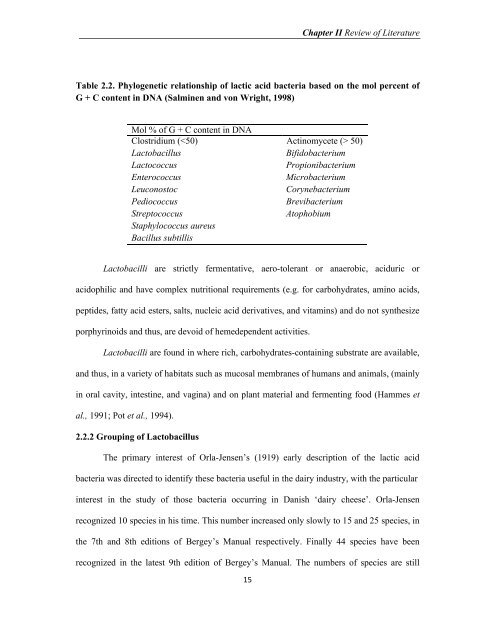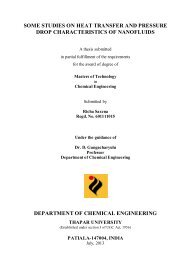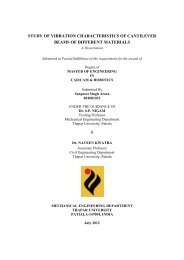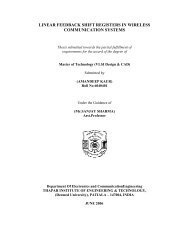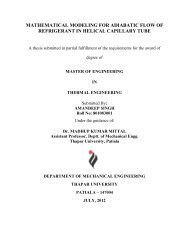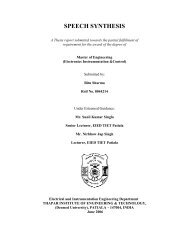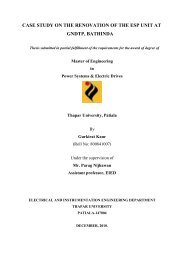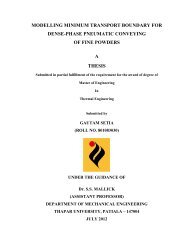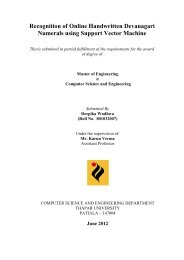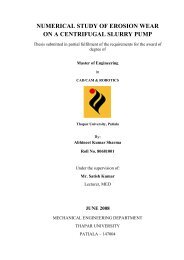from indigenous fermented foods and human gut ... - Thapar University
from indigenous fermented foods and human gut ... - Thapar University
from indigenous fermented foods and human gut ... - Thapar University
Create successful ePaper yourself
Turn your PDF publications into a flip-book with our unique Google optimized e-Paper software.
15<br />
Chapter II Review of Literature<br />
Table 2.2. Phylogenetic relationship of lactic acid bacteria based on the mol percent of<br />
G + C content in DNA (Salminen <strong>and</strong> von Wright, 1998)<br />
Lactobacilli are strictly fermentative, aero-tolerant or anaerobic, aciduric or<br />
acidophilic <strong>and</strong> have complex nutritional requirements (e.g. for carbohydrates, amino acids,<br />
peptides, fatty acid esters, salts, nucleic acid derivatives, <strong>and</strong> vitamins) <strong>and</strong> do not synthesize<br />
porphyrinoids <strong>and</strong> thus, are devoid of hemedependent activities.<br />
Lactobacilli are found in where rich, carbohydrates-containing substrate are available,<br />
<strong>and</strong> thus, in a variety of habitats such as mucosal membranes of <strong>human</strong>s <strong>and</strong> animals, (mainly<br />
in oral cavity, intestine, <strong>and</strong> vagina) <strong>and</strong> on plant material <strong>and</strong> fermenting food (Hammes et<br />
al., 1991; Pot et al., 1994).<br />
Mol % of G + C content in DNA<br />
Clostridium ( 50)<br />
Lactobacillus Bifidobacterium<br />
Lactococcus Propionibacterium<br />
Enterococcus Microbacterium<br />
Leuconostoc Corynebacterium<br />
Pediococcus Brevibacterium<br />
Streptococcus Atophobium<br />
Staphylococcus aureus<br />
Bacillus subtillis<br />
2.2.2 Grouping of Lactobacillus<br />
The primary interest of Orla-Jensen’s (1919) early description of the lactic acid<br />
bacteria was directed to identify these bacteria useful in the dairy industry, with the particular<br />
interest in the study of those bacteria occurring in Danish ‘dairy cheese’. Orla-Jensen<br />
recognized 10 species in his time. This number increased only slowly to 15 <strong>and</strong> 25 species, in<br />
the 7th <strong>and</strong> 8th editions of Bergey’s Manual respectively. Finally 44 species have been<br />
recognized in the latest 9th edition of Bergey’s Manual. The numbers of species are still


